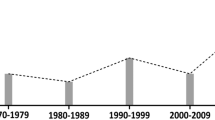Abstract
Based on SEM examinations of some 1600 species of monocotyledons out of 61 families the characteristics of their epicuticular waxes are described in this preliminary paper and illustrated by 20 SEM micrographs. Four basic types of waxes are recognized. Two of them occur throughout the monocotyledonous and dicotyledonous orders of angiosperms; two others are of high systematic significance and restricted to particular orders of the monocotyledons: The “Convallaria-Type” is characterized by fine wax platelets with parallel orientation, forming a pattern around the stomata reminiscent of electromagnetic field lines. This type is restricted to the three liliiflorous ordersAsparagales, Liliales, andBurmanniales. The “Strelitzia-Type” is characterized by massive compound wax rodlets; it is restricted to the superordersAreciflorae, Commeliniflorae, Zingiberiflorae, plus the two liliiflorous ordersBromeliales andVelloziales. The data are compared with the classifications ofDahlgren & Clifford (1982); they tentatively indicate the exclusion ofBromeliales, Velloziales, andTyphales from theLiliiflorae.
Similar content being viewed by others
Literatur
Amelunxen, F., Morgenroth, K., Picksak, T., 1967: Untersuchungen an der Epidermis mit dem Stereoscan-Elektronenmikroskop. — Z. Pflanzenphysiol.57, 79–95.
Barthlott, W., 1981: Epidermal and seed surface characters of plants: systematic applicability and some evolutionary aspects. — Nord. J. Bot.1, 345–355.
—, 1977: Raster-Elektronenmikroskopie der Epidermis-Oberflächen von Spermatophyten. — Tropische und subtropische Pflanzenwelt19 (Akad. Wiss. Lit. Mainz). — Wiesbaden: F. Steiner.
—, 1981: Oberflächenskulpturen bei höheren Pflanzen. — Progress in Botany43, 27–38. Berlin-Heidelberg-New York: Springer.
—, 1981: Zur Feinstruktur, Chemie und taxonomischen Signifikanz epicuticularer Wachse und ähnlicher Sekrete. — Tropische und subtropische Pflanzenwelt32 (Akad. Wiss. Lit. Mainz). — Wiesbaden: F. Steiner.
—, 1981: Mikromorphologie der Samenschalen als systematisches Merkmal bei Orchideen. — Ber. Deutsch. Bot. Ges.94, 267–273.
Bary, A. de, 1871: Über die Wachsüberzüge der Epidermis. — Bot. Zeitschr.29, 128–139, 145–154, 161–176, 566–571, 573–585, 605–619.
Behnke, H. D., Barthlott, W., 1983: New evidence from the ultrastructural and micromorphological fields in angiosperm classification. — Nord. J. Bot.3 (in press).
Cronquist, A., 1981: An Integrated System of Classification of Flowering Plants. — New York: Columbia Univ.Press.
Dahlgren, R., 1980: A revised system of classification of the angiosperms. — Bot. J. Linn. Soc.80, 91–124.
—, 1982: The Monocotyledons. — London: Academic Press.
Deyl, M., 1955: The evolution of plants and the taxonomy of the monocotyledons. — Acta Mus. Nat. Pragae11 B, 1–143.
Huber, H., 1969: Die Samenmerkmale und Verwandtschaftsverhältnisse derLiliiflorae. — Mitt. Bot. Staatssammlg. München8, 219–538.
—, 1977: The treatment of the monocotyledons in an evolutionary system of classification. — Plant Syst. Evol., Suppl.1, 285–298.
Hutchinson, J., 1959: The Families of Flowering Plants2 (Ed. 2), Monocotyledons. — Oxford: Clarendon Press.
Jeffree, C. E., Baker, E. A., Holloway, P. J., 1976: Origins of the fine structure of plant epicuticular waxes. — InDickinson, C. H., Preece, T. F., (Eds.): Microbiology of Aerial Plant Surfaces. — London: Academic Press.
Kimura, Y., 1956: Système et phylogénie des monocotylédones. — Notulae Systematicae15, 137–159.
Lister, G. R., Thair, B. W., 1981:In vitro studies on the fine structure of epicuticular leaf wax fromPseudotsuga menziesii. — Can. J. Bot.59, 640–648.
Martin, J. T., Juniper, B. E., 1970: The Cuticles of Plants. — London: Edward Arnold.
Malterud, K. D., Wollenweber, E., Gomez, L. D., 1979: The wax ofCalathea lutea (Marantaceae). — Z. Naturforsch.34 c, 157–158.
Melchior, H., (Ed.), 1964: A. Engler's Syllabus der Pflanzenfamilien. — Berlin: Borntraeger.
Takhtajan, A. L., 1980: Outline of the classification of flowering plants (Magnoliophyta). — Bot. Review46, 225–359.
Weisenseel, M. H., Kicherer, R. M., 1981: Ionic currents as control mechanisms in cytomorphogenesis. — InKiermayer, O., (Ed.): Cytomorphogenesis in Plants. (Cell. Biol. Monogr.8.) — Wien, New York: Springer.
Author information
Authors and Affiliations
Additional information
Unserem Lehrer Professor Dr.Werner Rauh in großer Dankbarkeit zu seinem 70. Geburtstag am 16. Mai 1983 gewidmet.
Rights and permissions
About this article
Cite this article
Barthlott, W., Frölich, D. Mikromorphologie und Orientierungsmuster epicuticularer Wachs-Kristalloide: Ein neues systematisches Merkmal bei Monokotylen. Pl Syst Evol 142, 171–185 (1983). https://doi.org/10.1007/BF00985897
Received:
Issue Date:
DOI: https://doi.org/10.1007/BF00985897



